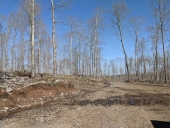
 2
2




 2
2




Those who hammer their swords into plows will plow for those who don't!
 1
1




 1
1








ourochreway.com-- Our Homesteading Blog about permaculture, life, and other things








jay william wrote:Interesting. We just looked at an old farmhouse in NC built in 1920 that has 2 locust stumps in the crawlspace, as part of the foundation holding up the 2 story house.
They seem in fine shape to me, but it does give me pause for a number of reasons... I was wondering if anybody had seen this sort of thing before, and whether or not we should look into updating them. Im leaning toward yes.








My tree nursery: https://mountaintimefarm.com/








Jp Wagner wrote:Saw this old thread and had a few ideas. Why not cut off the trees to the desired height and drill 4-5 1" diameter holes straight down into the stump about a 1-2 feet deep. Make up a solution of borate and polypropylene glycol and fill them up. If the tree was alive when cut, the pathways from roots to the trunk will be fully active. The solution should seep down into the roots with time. Since the building above will stop most of the exposure to water, there should be minimal seepage of the borate from the now preserved stump. Strip the bark with a power washer and surface treat the stump. You could even provide copper or stainless metal tubing which would be hammered into the holes for periodic addition of more borate solution. The metal tubing would be installed too high and cut off flush when the final flooring was installed.
A build too cool to miss:Mike's GreenhouseA great example:Joseph's Garden
All the soil info you'll ever need:
Redhawk's excellent soil-building series









Jp Wagner wrote:How were the tree stumps treated in that 2 story house?
My tree nursery: https://mountaintimefarm.com/
 2
2














Austin Shackles : email anshackles"at"gmail.com.




The bodark tree (Maclura pomifera) is a common tree in Arkansas, known to live in at least forty-seven of the state’s seventy-five counties. The name “bodark” is a slurring of the French “bois d’arc,” meaning “wood of the bow”—a reference to the Osage Indians’ practice of making bows from the tree.

Invasive plants are Earth's way of insisting we notice her medicines. Stephen Herrod Buhner
Everyone learns what works by learning what doesn't work. Stephen Herrod Buhner
 1
1












 3
3








 1
1













Please give me your thoughts on my Affordable, double-paned earthbag window concept





















At my age, Happy Hour is a nap.




Travis Johnson wrote:I am not so sure about this.
But a person could also go with a rubble-filled foundation, for the cost of an excavator rental which is $450; delivery included. And there is something to be said for building upon rock, as the Tiny House I live in now was built in 1930 after the first house here burnt. The foundation has been in place since the year 1800, making it 219 years old, and it has not moved. Even at 89 years old, the sills in this Tiny House are rot free.













Just my 2 cents...
Money may not make people happy but it will get you all the warm fuzzy puppies you can cuddle and that makes most people happy.
 2
2








Jonathan said," Any thoughts on safety and how long this could last?
Invasive plants are Earth's way of insisting we notice her medicines. Stephen Herrod Buhner
Everyone learns what works by learning what doesn't work. Stephen Herrod Buhner

|
Is this the real life? Is this just fantasy? Is this a tiny ad?
Announcing The World's Largest Collection of 16,000 Woodworking Plans
https://woodworking-plans
|





